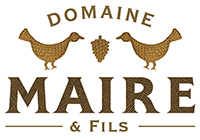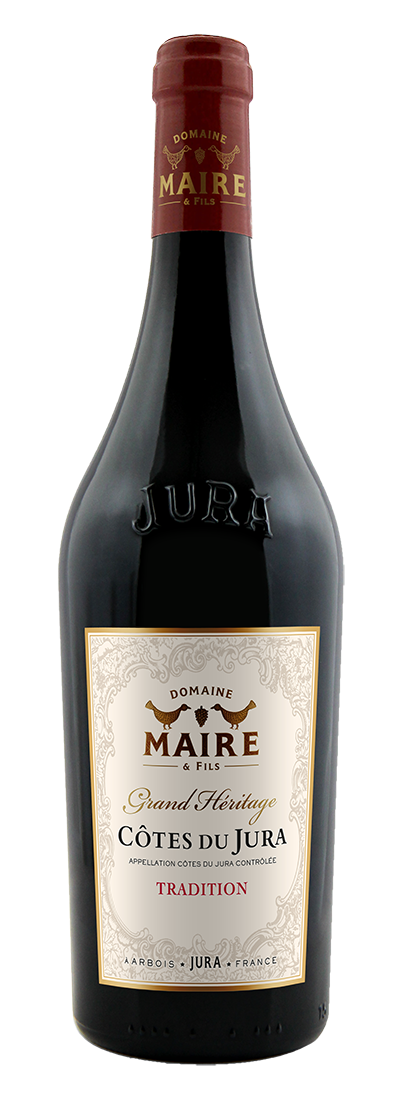CÔTES DU JURA - TRADITION 2024

click on one of the vintages below for further information
Several generations have been necessary to patiently built one of the largest and greatest estates in the area, focused on key appellations such as Château-Chalon, l’Étoile and Arbois. The Domaine MAIRE & Fils covers nowadays 234 hectares of vines producing all the area grapes varieties.
In the glass the wine offers an intense dark cherry-red colour. The nose gives off small red berries aromas, with pleasant spicy hints. In the mouth, the wine is lively, with hints of spice and ripe fruit. It has an elegant structure and a long, elegant finish.
The work in the vines, is based on the respect of the nature and the soil. For young vines, located on steep slopes, to avoid erosion, we cultivate a row out of two, practice soil reassembly to aerate the lands subjected to settlement due to moisture, and grass with plants.
Such as clover, which, by competing on the vine, can modulate its mineral and water supply and control its vigor and yield.
The restructuring of the vines contributes to the harmony of our cuvée: the young vines bring the exuberance, the freshness and the acidity. While the older specimens bring the structure and character.
At the moment of pressing, the press and drop juices of each cuvee are assembled and withdrawn for malolactic fermentation on fine lees.
The wines are then aged in stainless tank for 8 months and blended together (70 % Pinot Noir, 20 % Trousseau and 10% Poulsard) before light filtration and bottling.
The year 2024 will remain etched in our memories.
The weather conditions were extreme: temperatures nearing 40°C, periods of intense drought, and episodes of heavy rain and hail. Our vineyards were severely tested, and we experienced a significant drop in yields, losing between 60% and 70% of our harvest.
Despite an early start to the growing season in March, we were able to begin the harvest at the usual time, around late September. The harvest spanned 3 to 4 weeks, allowing us to pick the grapes at their optimal ripeness.
The first tastings are promising: our wines are well-balanced, with smooth notes and generous aromas. The whites stand out for their freshness and intensity, thanks to high concentrations of thiols. The reds offer intense fruitiness and a delicate texture, with acidity levels that align with our region’s expectations.
Despite the challenges posed by the climate, we remain optimistic. This vintage, although marked by reduced production, could very well turn out to be exceptional. We look forward to seeing how these wines will evolve over time.
The weather conditions were extreme: temperatures nearing 40°C, periods of intense drought, and episodes of heavy rain and hail. Our vineyards were severely tested, and we experienced a significant drop in yields, losing between 60% and 70% of our harvest.
Despite an early start to the growing season in March, we were able to begin the harvest at the usual time, around late September. The harvest spanned 3 to 4 weeks, allowing us to pick the grapes at their optimal ripeness.
The first tastings are promising: our wines are well-balanced, with smooth notes and generous aromas. The whites stand out for their freshness and intensity, thanks to high concentrations of thiols. The reds offer intense fruitiness and a delicate texture, with acidity levels that align with our region’s expectations.
Despite the challenges posed by the climate, we remain optimistic. This vintage, although marked by reduced production, could very well turn out to be exceptional. We look forward to seeing how these wines will evolve over time.

